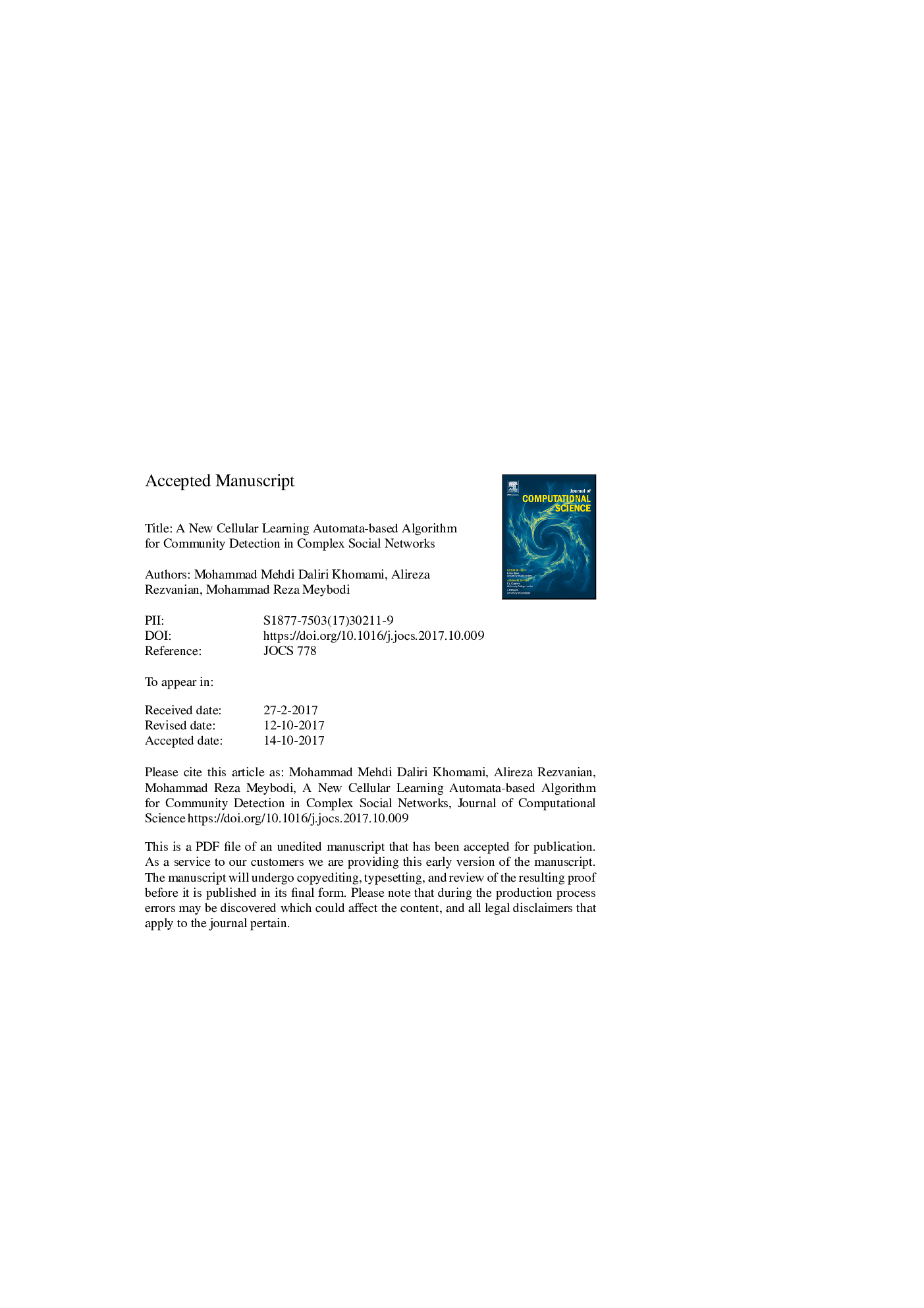| Article ID | Journal | Published Year | Pages | File Type |
|---|---|---|---|---|
| 6874476 | Journal of Computational Science | 2018 | 31 Pages |
Abstract
Community structure is one of the common and fundamental characteristics of many real-world networks such as information and social networks. The structure, function, evolution and dynamics of complex social networks can be explored through detecting the community structure of networks. In this paper, a new community detection algorithm based on cellular learning automata (CLA), in which a number of learning automata (LA) cooperate with each other, is proposed. The proposed algorithm taking advantage of irregular CLA finds a partial spanning tree and then forms the local communities on the found the partial spanning tree at each step in order to reduce the network size. As the proposed algorithm proceeds, LA are interacted with both local and global environments to modify the found communities that gradually yielded the near-optimal community structure of the network through the evolution of the CLA. To evaluate the efficiency of the proposed algorithm, several experiments are conducted on synthetic and real networks. Experimental results confirm the superiority and effectiveness of the proposed CLA-based algorithm in terms of various evaluation measures comprising Conductance, Modularity, Normalized Mutual Information, Purity and Rand-index.
Keywords
Related Topics
Physical Sciences and Engineering
Computer Science
Computational Theory and Mathematics
Authors
Mohammad Mehdi Daliri Khomami, Alireza Rezvanian, Mohammad Reza Meybodi,
